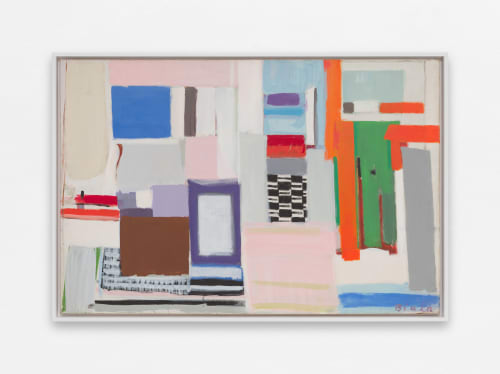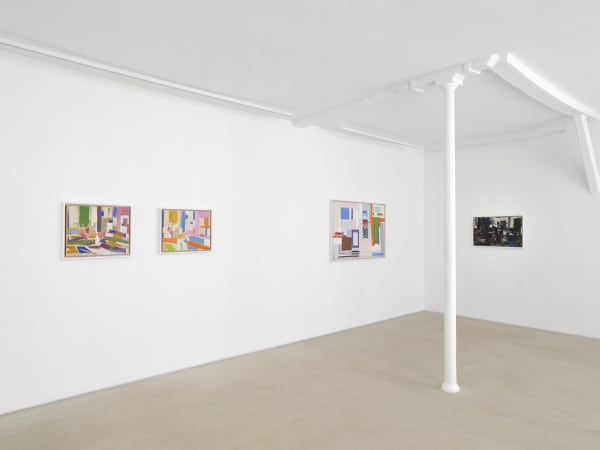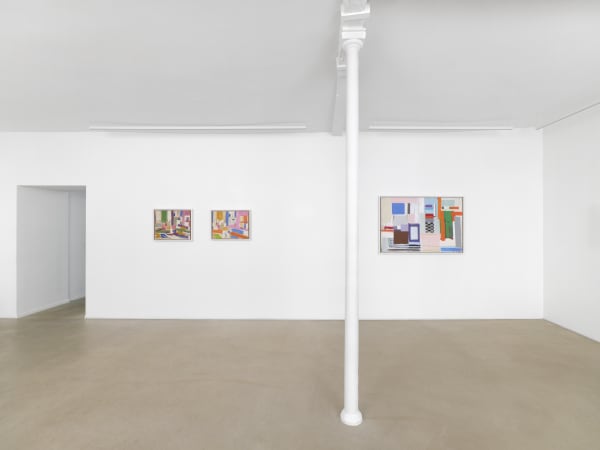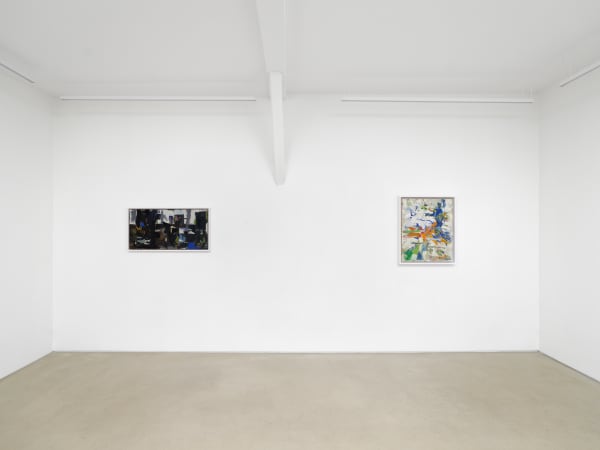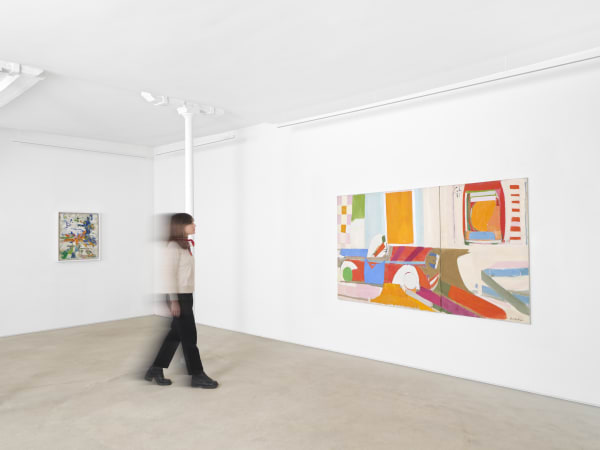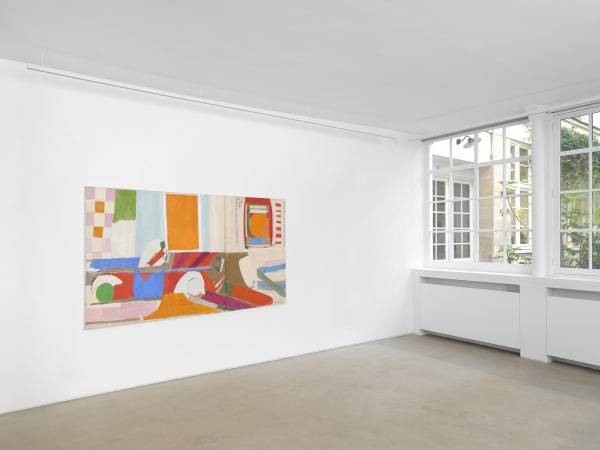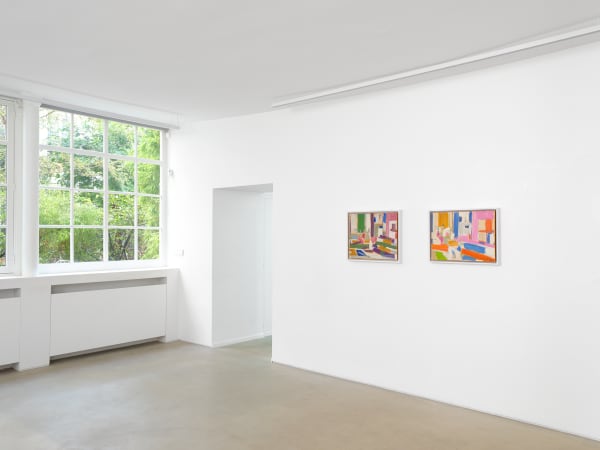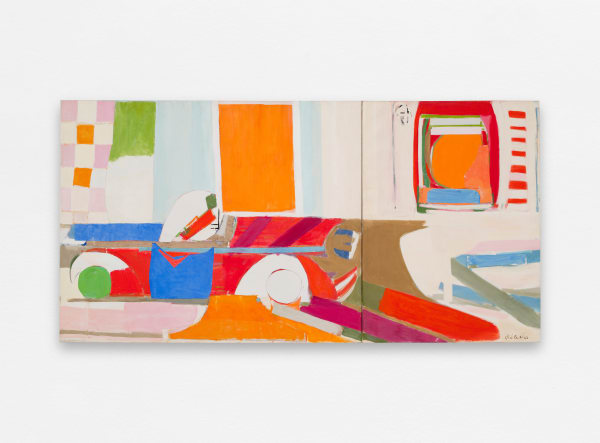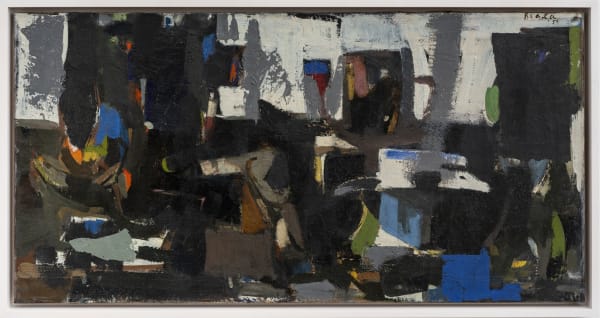L'ESPRIT FRANÇAIS: JANICE BIALA
« Je n’aurais aucun intérêt pour le Paradis s’il ne ressemblait pas à la France. »
— Biala, lettre à Jack Tworkov, 3 décembre 1947
La galerie Pavec a le plaisir d’annoncer la première exposition personnelle à Paris depuis trente-huit ans de la peintre expatriée Janice Biala, figure majeure de la scène artistique franco-américaine. Intitulée « Biala : l’esprit français », l’exposition couvre quatre décennies de création et met en lumière plusieurs des thèmes les plus emblématiques de l’artiste : natures mortes, intérieurs et scènes de rue. L’exposition est accompagnée d’un catalogue illustré, comprenant une préface de Pauline Pavec, une introduction du spécialiste de Biala, Jason Andrew, ainsi que la réédition d’un essai rare datant de 1952 et signé du célèbre critique d’art français Guy Weelen.
Biala (1903, Biala, Pologne ; 2000, Paris, France) était une peintre américaine d'origine polonaise connue à Paris et à New York pour sa sublime assimilation de l'école de Paris et de l'école new-yorkaise de l'expressionnisme abstrait. Au cours de ses huit décennies de carrière, son œuvre s'est caractérisée par une réinterprétation moderniste de thèmes classiques tels que les paysages, les natures mortes et les portraits, animés gestuellement par des coups de pinceau ponctués et soutenus par son sens aigu de l'observation.
« À la galerie Pavec, nous nous engageons à mettre en lumière des artistes singuliers, souvent des femmes, dont l’importance n’a pas été pleinement reconnue par l’histoire. C’est dans cet esprit que l’œuvre de Biala a immédiatement trouvé une résonance en moi. Elle m’a frappée par sa force, son indépendance, et sa capacité à faire le lien entre deux mondes artistiques : Paris et New York. Biala incarne ce dialogue transatlantique qui a façonné tout le XXe siècle, et c’est un véritable bonheur de ramener cette œuvre à Paris. »
— Pauline Pavec, Galerie Pavec
Paris a joué un rôle déterminant dans la vie et l'œuvre de Janice Biala, agissant à la fois comme un refuge créatif et une source d’inspiration inépuisable. Elle confie un jour au romancier et théoricien de l'art André Malraux que c'est grâce à Porthos, le protagoniste des Trois Mousquetaires, qu’elle devient artiste. Arrivée à Paris en avril 1930, Biala rencontre par hasard l’écrivain anglais Ford Madox Ford, avec qui elle vit et collabore. Elle s’immerge alors dans les milieux artistiques et intellectuels bouillonnants de la capitale, s’imprégnant pleinement de la culture moderniste européenne. Elle tisse des liens durables avec d’importantes figures du modernisme telles qu’Ezra Pound, Gertrude Stein, George Antheil, Constantin Brancusi, Henri Matisse et Pablo Picasso.
Biala fait preuve d’une ténacité farouche, d’audace et de détermination, et Paris lui offre une liberté et une inspiration nouvelles, un contraste saisissant avec les contraintes qu’elle connaît en tant que femme en Amérique. Les rues, les cafés et la lumière de Paris imprègnent son œuvre d’une clarté lyrique singulière. Même après la mort de Ford et son évasion héroïque du régime nazi au début de la Seconde Guerre mondiale, Biala reste profondément nostalgique de Paris. Elle obtient d’ailleurs une place sur l’un des premiers navires de passagers autorisés à y retourner après la guerre.
Elle s’installe définitivement à Paris, où elle devient une figure emblématique du cercle des expatriés américains. Dans son atelier, Biala se tient au carrefour de l’École de Paris et de l’expressionnisme abstrait de l’École de New York, deux mouvements artistiques qu’elle maîtrise parfaitement. En 1949, elle reçoit une mention honorable spéciale au Prix de la Critique, une première pour une artiste étrangère. La singularité de son travail l’amène à collaborer avec d’importantes galeries et personnalités du monde de l’art, telles que Jeanne Bucher (Galerie Jeanne Bucher), Jean-Robert Arnaud (Galerie du Point Cardinal), et la Galerie Jacob, pour n’en nommer que quelques-unes. Ses œuvres figurent aujourd’hui dans les collections du Centre National des Arts Plastiques (CNAP), du Centre Pompidou (MNAM-CCI), des Fonds Régionaux d’Art Contemporain (FRAC), du Musée Ingres Bourdelle, et plus récemment dans celle du Musée d’Art Classique de Mougins, entre autres.
Pour Biala, Paris ne se limite pas à un simple décor : la ville constitue le noyau de son identité artistique et intellectuelle. Son architecture et son rythme animent son œuvre, non pas toujours sous forme de représentations directes, mais à travers une recherche intime d’équilibre, de clarté et de lyrisme. Jusqu’à sa mort en 2000, Paris reste son ancrage spirituel et créatif, le lieu où son regard artistique s’affirme, s’épanouit, et atteint sa pleine maturité.
Trente-huit ans se sont écoulés depuis la dernière exposition personnelle de Biala dans une galerie parisienne. Cette nouvelle exposition rend hommage à une artiste qui, en réalité, n’a jamais quitté Paris.
— Jason Andrew, 2025
“I’d have no use for Paradise if it wasn’t like France.”
— Biala, Letter to Jack Tworkov, December 3, 1947
Galerie Pavec is pleased to announce the first solo exhibition in Paris in thirty-eight years of the celebrated ex-pat painter Janice Biala. The exhibition “Biala: l’espirt Français” spans four decades and focuses on several of the artist’s most revered themes—still life, interiors, and street views. The exhibition is accompanied by a fully illustrated catalogue featuring a foreword by Pauline Pavec, an introduction by Biala scholar Jason Andrew, and a reprint of a rare 1952 essay by the noted French art critic Guy Weelen.
Biala (b. 1903, Biala, Poland; d. September 24, 2000, Paris, France) was a Polish-born American painter known in Paris and New York for her sublime assimilation of the School of Paris and the New York School of Abstract Expressionism. During her eight-decade career, her work was characterized by a modernist reinterpretation of classical themes of landscapes, still-life, and portraiture, animated gesturally with punctuated brush work held fast by her keen eye for observation.
“At Galerie Pavec, we are committed to bringing back into the light singular artists, often women, whose importance has not been fully recognized by history. It is in this spirit that Biala’s work immediately found a resonance in me. Her work immediately struck me with its strength, its independence, and the way it bridges two artistic worlds: Paris and New York. Biala embodies this transatlantic dialogue that shaped the entire twentieth century and it’s thrilling to bring this work back to Paris.”
– Pauline Pavec, Galerie Pavec
Paris played a vital role in shaping her life and art, serving as both a creative haven and a lifelong muse. She told the French novelist and art theorist André Malraux it was because of Porthos, the protagonist of The Three Musketeers, that she became an artist. She first arrived in Paris in April 1930, and through a fateful encounter met the English novelist Ford Madox Ford with whom she lived and collaborated. Seizing the time and the opportunity, Biala immersed herself in the thriving artistic and intellectual community in Paris and identified herself more broadly with European culture. She forged life-long relationships with modernist giants like Ezra Pound, Gertrude Stein, George Antheil, Constanti Brancusi, Henri Matisse, and Pablo Picasso.
Biala was fierce, bold, and self-determined, and Paris offered her freedom and inspiration—a stark contrast to the constraints she experienced as a woman in America. The streets, the cafés, and the light of Paris infused her work with a unique lyrical clarity. Even after the death of Ford and her heroic escape from the Nazi regime at the onset of World War II, Biala longed for Paris, eventually booking passage on one of the first passenger vessels allowed to return after the war.
She eventually settled permanently in Paris as a legendary American expat. In the studio, Biala found herself at the intersection of the School of Paris and the New York School of Abstract Expressionism—aesthetic approaches she knew firsthand. In 1949, Biala received a special honorable mention in the Prix de la Critique—the first time a foreigner earned the award. The distinctiveness of the work aligned her with major galleries and gallerists like Jeanne Bucher (Galerie Jeanne Bucher), Jean-Robert Arnaud (Galerie du Point Cardinal), and Galerie Jacob to name a few. Biala’s work can be found in the collections of the Centre National des Arts Plastiques (CNAP), the Centre Pompidou (MNAM-CCI), the Fonds Régionaux d’Art Contemporain (FRAC), Musée de Grenoble, the Musée Ingres Bourdelle, and more recently the collection of Musée d’Art Classique de Mougins among others.
For Biala, Paris wasn’t just a backdrop; it was central to her identity as an artist and intellect. The city’s architecture and rhythm appear throughout her work, often not in literal depictions, but through a distinctly personalized sense of balance, clarity, and lyricism. Until her death in 2000, Paris remained Biala’s spiritual and creative home—a city where her artistic vision matured, flourished, and ultimately found its most resonant expression.
It has been thirty-eight years since the last solo exhibition of Biala’s work was organized by a gallery in Paris. This exhibition celebrates the artist that near left.
— Jason Andrew, 2025
